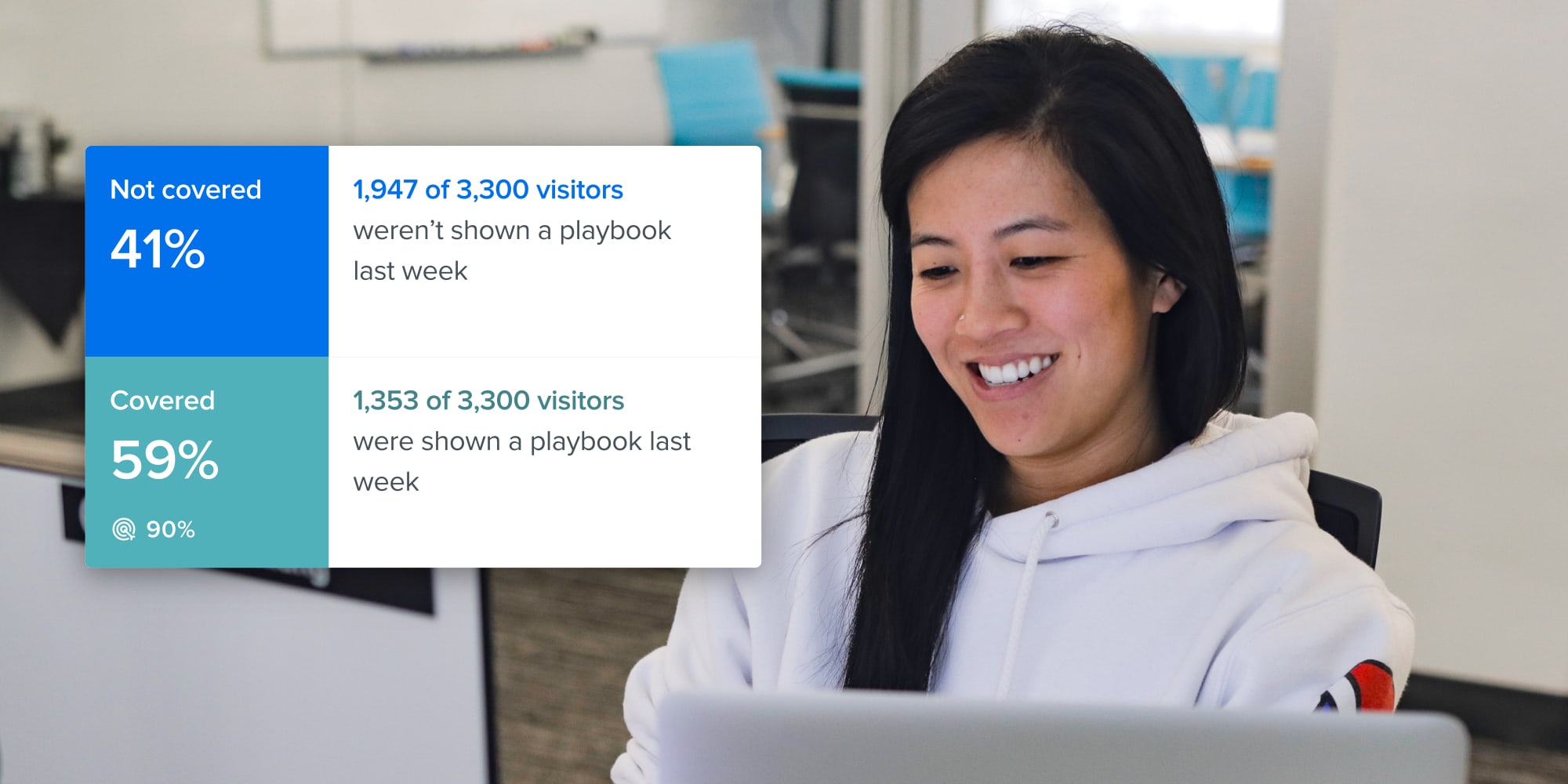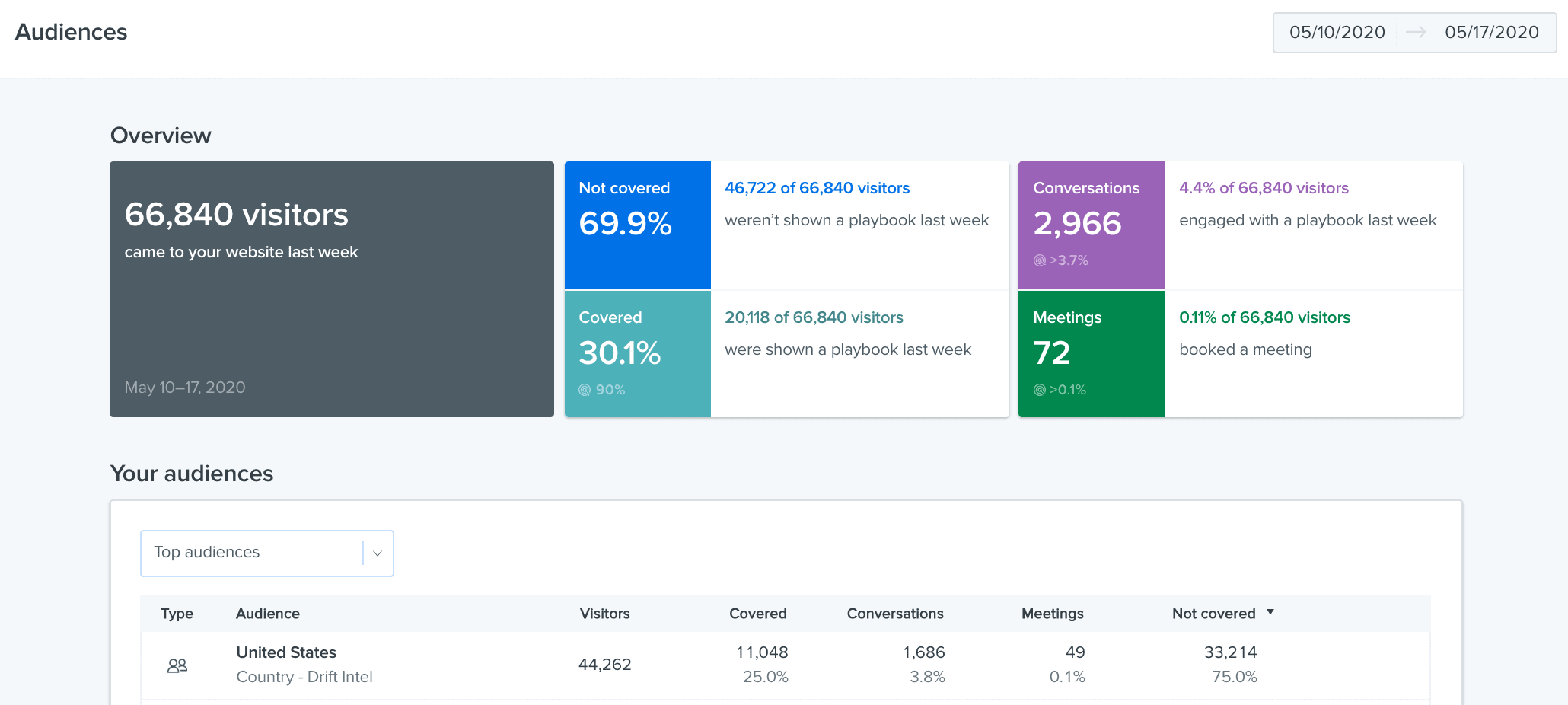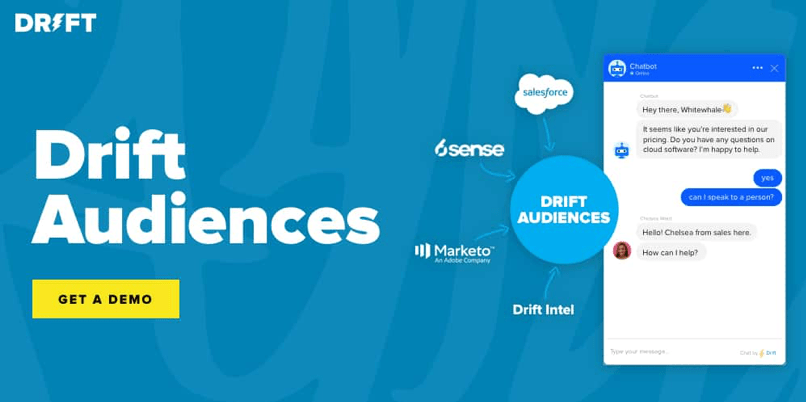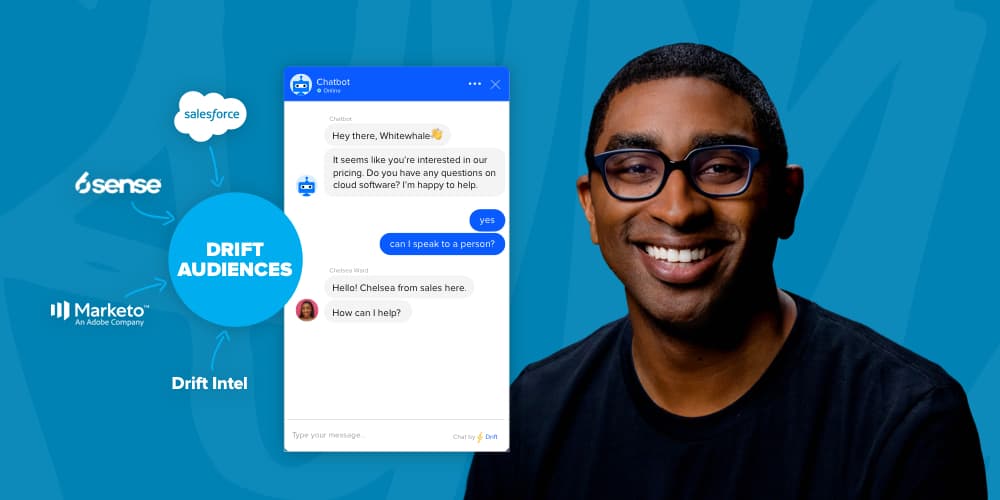
Hey there ?
I’m Tim Ozmina, and I run Drift on Drift.

That means I’m the one in charge of creating and managing hundreds of chatbots across the Drift website – all of them with different goals and objectives. I spend my days perfecting hooks, adding playbook branches, and troubleshooting performance. But, sometimes, it can be a challenge to understand who is seeing those bots and whether the right message is reaching the right people.
That’s where Drift Audiences comes in. It helps me find a sense of direction by identifying areas of opportunity within our website traffic and letting me take action to address them. I use Audiences to see who is encountering a playbook, who is not, and what opportunities there are to create additional playbooks and improve coverage.
Before I take any action around adding new bots, I start by understanding who I’m trying to engage with. Are they a target account? Are they interested in pricing? Are they coming from a paid campaign? Once I have established the “who” I can determine what strategy to put into play.
Here are a few ways you can improve coverage and discover opportunities with Drift Audiences:
1. Add Bots to Areas That Are Missing Coverage
Let’s start high-level. In this example, we can see that only about 30% of total site visitors are encountering a bot or playbook. This means most of your site traffic is not being offered an opportunity for engagement, which is clearly not ideal. By talking to a wider audience, you can improve the chance of a conversion and increase the overall site experience for your visitors.

The list at the bottom of the image is sorted based on the size of the audience, so I suggest starting at the top and working your way down. I generally aim for 90% coverage of a particular audience.
2. Start Conversations with Target Accounts
Not all audiences are created equal. Many companies leverage account-based marketing, or ABM, to roll out the red carpet for high-value accounts. But, do you know how many of those accounts you’re actually engaging with? As demonstrated in the example below, 20% of target accounts haven’t encountered a bot on the website, which means they haven’t had the chance to start a conversation.

The next step would be to set up additional playbooks or edit existing ones to be more personalized and customized. Don’t let visitors from high-value accounts leave your website without engaging with you.
3. Engage with the Verticals That Add the Most Value to Your Business
Your website traffic can be sliced and diced in many different ways. One of these could be the type of businesses that are buying from your company. Are you getting a lot of visitors from a particular vertical or industry? Target those companies by addressing industry-specific pain points and route them to the right member of your sales team.

In addition to industry type, also consider using Drift Intel data to target by company size and location.
4. Talk to Visitors on High Intent Pages
Different site visitors are going to be at different stages of their buying journey. Visitors on certain website pages, such as your “contact us” or “pricing,” could be signaling a higher intent to purchase. Adding playbook coverage to these pages helps you engage with them and ease their path to purchase.

Use the “skip the form” or pricing page bots to acknowledge their interest and give them a fast track to your sales teams.
5. Double Down on Paid Campaigns
If you want to improve conversion on the traffic you are paying to generate, try adding a bot to the mix. Use a “paid ad converter” bot to engage with those paid visitors to your website and drive them further down the funnel while also increasing the ROI from your marketing investments.
In this example, only 51% of visitors coming from a UTM campaign are seeing a bot. That could mean conversions – and money – left on the table.
![]()
6. Uncover New Accounts to Target
While many of you may already have a list of accounts you’re going after, that list may not be exhaustive. With the “non-target accounts” filter, you can see what companies are visiting your website that are not on your target list…yet. Use this segment to augment your list of target accounts and expand your audience.
Now you have the audience you want to target, but what do you do with that information? Once you have identified the audience segment that will serve as your next opportunity, you can improve coverage by creating playbooks to address them. Simply click on the segment, click “create a playbook,” and start building bots using our recommended templates.

And there you have it. My six tips for using Drift Audiences to create more meaningful conversations by identifying who you’re talking to – and who you should be targeting.







